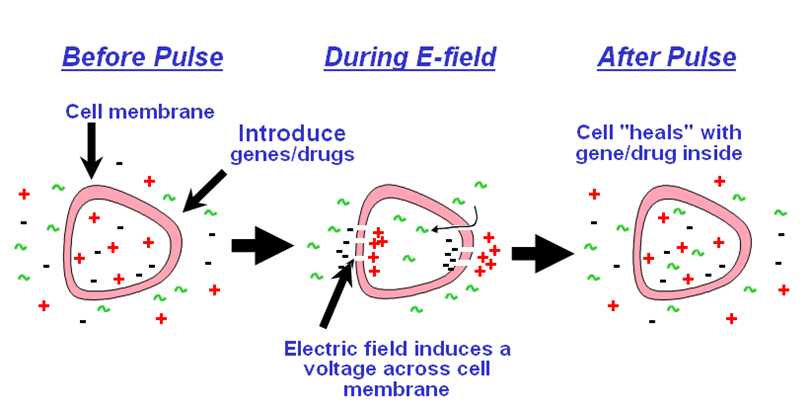Bacterial Transformation: Electroporation
6/3/2014
JoVE Science Education Database. Basic Methods in Cellular and Molecular Biology. Bacterial Transformation: Electroporation. Journal of Visualized Experiments, Cambridge, MA, doi: 10.3791/5060 (2014).
The term “transformation” refers cellular ingestion of foreign DNA. In nature, transformation can occur in certain types of bacteria. In molecular biology, however, transformation is artificially induced through the creation of pores in the bacterial cell walls. Bacterial cells that are able to take up DNA from the environment are called competent cells. Electrocompetent cells can be produced in the laboratory and transformation of these cells can be achieve via the application of an electrical field that creates pores in the cell wall through which DNA can pass.
The video explains the equipment used in electroporation such as an electroporator and electroporation cuvette. The video also goes through a step-by-step procedure about how to create electrocompetent cells and electroporate cells of interest. Prediction of the success of a transformation of an experiment, by observing the time constant, as well as the importance of removing salt from the solutions when electroporating, are also mentioned.






